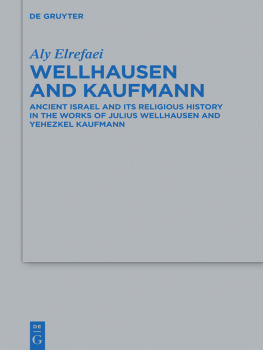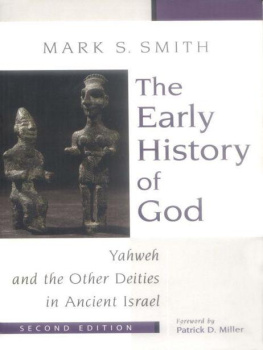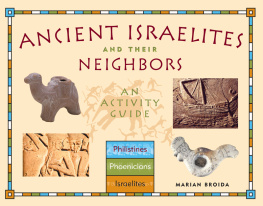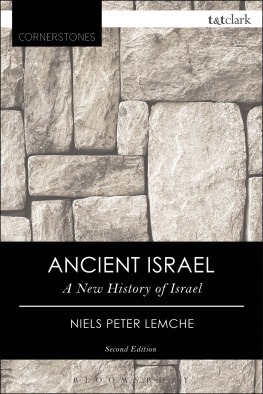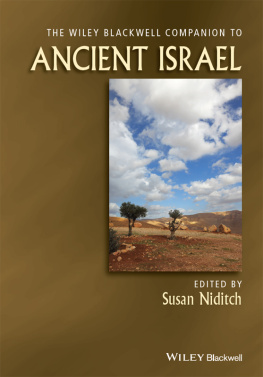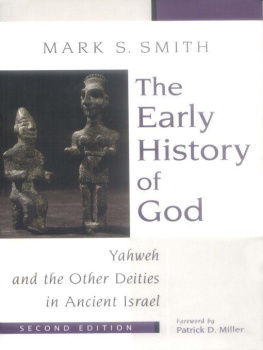THE OLD TESTAMENT LIBRARY
Editorial Advisory Board
JAMES L. MAYS
CAROL A. NEWSOM
DAVID L. PETERSEN
A History of Israelite Religion in the Old Testament Period
A History of Israelite
Religion in the Old
Testament Period
Volume II: From the Exile
to the Maccabees
Rainer Albertz

Translated by John Bowden from Religionsgeschichte Israels in alttestamentlicher Zeit, Das Alte Testament Deutsch, published 1992 by Vandenhoeck & Ruprecht, Gttingen
Vandenhoeck & Ruprecht 1992
Translation John Bowden 1994
First published 1994
by SCM Press Ltd,
26-30 Tottenham Road, London N1 4BZ
All rights reserved. No part of this book may be reproduced or transmitted in any form or by any means, electronic or mechanical, including photocopying, recording, or by any information storage or retrieval system, without permission in writing from the publisher.
First American Edition 1994
Published in the U.S.A. by Westminster John Knox Press, 100 Witherspoon Street, Louisville, Kentucky 40202-1396
This book is printed on acid-free paper that meets the American National Standards Institute Z39.48 standard.
PRINTED IN THE UNITED STATES OF AMERICA
00 01 02 03 10 9 8 7 6 5 4 3 2
Library of Congress Cataloging-in-Publication Data
(Revised for vol. 2)
Albertz, Rainer, date.
A history of Israelite religion in the Old Testament.
Includes bibliographical references.
Contents: v. 1. From the beginnings to the end of the monarchy v. 2. From the exile to the Maccabees.
1. JudaismHistoryTo 70 A.D. 2. Bible.O.T.Theology. 3. JewsHistoryTo 70 A.D. I. Title.
BM165.A4313 1994 296'.09'01 94-7424
ISBN 0-664-21846-6 (v. 1)
ISBN 0-664-21847-4 (v. 2)
Contents
4. The History of Israelite Religion in the Exilic Period
Although as has become evident the transitions were historically quite fluid, the period of the exile, which is traditionally put between the years 587 and 539, marks a deep rift in the history of Israelite religion. With it the previous religion of Israel became involved in its most serious crisis, but in it the foundation stone for the most far-reaching renewal of this religion was also laid.
We may wonder how it was possible for the religion of Israel not only to survive the loss of a state unity which for a long time was to prove final, but even to exploit it as an opportunity for its renewal. Here we must remember that its different levels and classes were affected quite differently by the national catastrophe: only official Yahweh religion was drawn deeply into the national suffering; if personal piety did not remain unaffected, it did remain largely intact. And it will prove that the latter not only made a quite vital contribution to the support of official religion which was now in crisis, but also representatively took over a whole series of its functions.
But even within official religion not all classes were equally affected by the political disaster: with the destruction of the Jerusalem sanctuary and the downfall of the monarchy, old-style temple and kingship theology with their unconditional guarantees of salvation had totally failed. That means that there was a serious break only in the two lines of traditions which had first been added to official Yahweh religion with the monarchy. What had not failed was the Deuteronomic reform theology, which already at the end of the monarchy had considerably cut back temple and kingship theology and had brought them into a synthesis with traditions from the Yahweh religion of the pre-state period. Certainly the loss of land as a result of deportations and emigrations also put deeply in question the exodus-settlement conception, which took up elements from before the state, but because of the link between the possession of the land and the law, this could still find a theological answer within Deuteronomic theology. So it is not surprising that the version of official Yahweh religion that had been maintained through the Deuteronomic synthesis became a decisive basis in the exile from which a majority of groups of theologians whom we may sum up as Deuteronomists sought to master the crisis and formulate a new beginning.
that came to be accepted by the whole of society as part of its official theology though only after tough struggles. It became the second decisive basis on which the crisis of official Yahweh religion could be coped with.
Thus the period of the exile led to a far-reaching realignment within official Yahweh religion and a revaluation of personal piety, to which previously little attention had been paid. This process was further favoured by a circumstance which was really rather more threatening: the wide-ranging dissolution of political and cultic institutions.
The downfall of the institutions of the temple cult and the monarchy led to a far-reaching break-up of the link between the currents of religious tradition and the institutions. This opened up an opportunity for priests, prophets, officials and other intellectuals who had lost their functions to converge in various religious pioneer groups modelled on the groups formed around the pre-exilic prophets of judgment, of official Yahweh religion into divergent theological approaches. But these dangers were only to become fully visible in the subsequent early post-exilic period.
4.1 Sociological developments during the exile
N.Avigad, Seals of Exile, IEJ 15, 1965, 222-30; E.J.Bickerman, The Babylonian Captivity, in W.D.Davies and I.Finkelstein (eds.), The Cambridge History of Judaism, Vol.1, 1984, 324-58; G.Buccellati, Gli Israeliti di Palestina al tempo dellesilio, BeO 2, 1960, 199-210; M.D.Coogan, Life in the Diaspora, BA 37, 1974, 6-12; I.Ephal, On the Political and Social Organization of the Jews in the Babylonian Exile, ZDMG Suppl V, 1980, 106-12; J.N.Graham, Palestine During the Period of Exile, 586-539 BC, Diss.theol.Cardiff 1977; id., Vinedressers and Plowmen. 2 Kings 25:12 and Jeremiah 52:16, BA 47,1984, 55-8; B.Hartberger, An den Wassern von Babylon... Psalm 137 auf dem Hintergrund vom Jeremia 51, der biblischen Edom-Traditionen und babylonischen Originalquellen, BBB 63, 1986; E.Janssen, Juda in der Exilszeit, FRLANT 69, 1956; H.Kreissig, Die sozialkonomische Situation in Juda zur Achmenidenzeit, Schriften zur Geschichte und Kultur des alten Orients 7, 1963, 20-34; H.-P.Mller, Phnikien und Juda in der exilisch-nachexilischen Zeit, WO 7, 1970, 189-204; B.Porten, The Jews in Egypt, in W.D.Davies and L.Finkelstein (eds.), The Cambridge History of Judaism, Vol.1, 1984, 372-400; D.L.Smith, The Religion of the Landless. The Social Context of the Babylonian Exile, 1989; G.Wallis, Die soziale Situation der Juden in Babylonien zur Achmenidenzeit aufgrund von fnfzig ausgewhlten babylonischen Urkunden, Diss.phil Berlin 1953 (typescript); R.Zadok, The Jews in Babylonia during the Chaldean and Achaemenian Periods according to the Babylonian Sources, Haifa 1979.
We have only very sketchy knowledge of historical and thus also sociological developments during the exilic period, since there are no direct sources apart for those for the period shortly after 587 (Jeremiah, Lamentations). The Chronistic history work makes it seem as if all Israel was deported and the land of Judah was uninhabited during the exile (II Chron.36.21), but this does not correspond to the historical facts. Even if we are unclear about the precise number of those exiled, So in this period we have to consider the very different social conditions among those who remained in the land and the Babylonian and Egyptian Gola.
Next page

